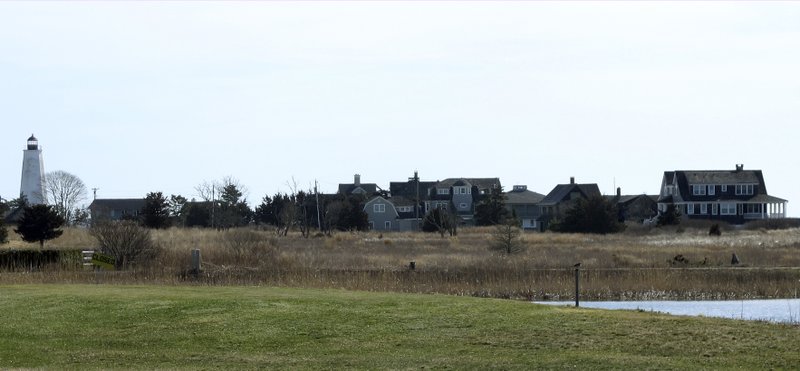OLD SAYBROOK, Conn. -- A proposed overhaul of coastal protection zones would make more than 900 East Coast structures eligible for government-backed flood insurance, which critics say would disproportionately benefit wealthy Americans and strain disaster-relief programs.
The areas proposed for the overhaul include an exclusive Connecticut peninsula with eight multimillion-dollar homes, all of which are now in a coastal protection zone that bans homeowners from receiving taxpayer funds to fix storm damage. That area is the Fenwick neighborhood of Old Saybrook, where the Connecticut River meets the Long Island Sound.
A 1938 hurricane washed many Fenwick homes out to sea, including that of Katharine Hepburn's family. The eight homes are a short distance from the rebuilt Hepburn house where the actress died in 2003.
The zones from New Hampshire to Virginia are intended to discourage new development in areas vulnerable to storms. However, half the homes were constructed after the zone was created nearly four decades ago, meaning that the owners knew the risks and built anyway.
"I'm concerned about federal subsidies going to people who, quite frankly, don't need it," said Steve Ellis, vice president of Taxpayers for Common Sense, a Washington, D.C.-based group that describes itself as a nonpartisan government spending watchdog. "The idea was, you can develop in these areas, but don't expect any support from the federal government. You want to build, it's on your dime."
Other critics call the proposals a step in the wrong direction at a time when scientists expect stronger and more frequent storms because of climate change.
The National Flood Insurance Program is already more than $20 billion in debt, and it could be drained of hundreds of millions of dollars more by the mapping changes. The federal government also could be on the hook for millions of dollars more in disaster-aid payouts through the Federal Emergency Management Agency to fix storm damage to infrastructure, including roads and bridges.
Officials with the U.S. Fish and Wildlife Service said the properties on which the structures in question were built were mistakenly included in the national Coastal Barrier Resources System, which was created in 1982.
It was a Fish and Wildlife Service review of the maps, not requests from property owners, that spurred the changes, agency spokesman Brian Hires said.
Fenwick is not the only ritzy waterfront community affected by the new maps. In New York's Southampton, for instance, a boundary line has been shifted slightly to make a nearly $18 million beachfront home and another property eligible for federal aid.
In the case of the Fenwick and Southampton properties, Hires said the proposal simply corrects past mistakes: Officials now argue that the original determination that there wasn't enough development on the lands to keep them out of the system was wrong and thus the properties should never have been in the protection zone.
Several Fenwick homeowners did not return messages seeking comment, while others did not want to comment publicly.
The Southampton estate is owned by Clifford and Barbara Sobel and their family, according to town records. Clifford Sobel is a managing partner at Valor Capital and served as U.S. ambassador to the Netherlands from 2001 to 2005 and to Brazil from 2006 to 2009. He did not respond to messages seeking comment.
The proposal, however, has garnered support from several environmental groups because it would also add more than 430 square miles into the protection system.
That land includes nearly 300 structures, more than half of them in public parks. That has raised concerns by local officials, including many in New Jersey, who worry that federal dollars would no longer be available to rebuild or repair park buildings, beaches and other public structures after damaging storms.
The Coastal Barrier Resources System -- which now includes more than 5,400 square miles along the Gulf of Mexico, the Atlantic Ocean and the Great Lakes, as well as in Puerto Rico and the U.S. Virgin Islands -- saved the federal government $9.5 billion in disaster-aid payouts from 1989 to 2013, according to a recent study by academic researchers. Not taking the current proposal into account, the system is projected to save another $11 billion to $108 billion by 2068, the study said.
Over the years, however, Congress has removed hundreds of properties from the protection zones. In December, President Donald Trump signed a bill that removed about 500 structures, with officials again citing past mistakes.
Mistakes or not, some experts are surprised the government would want to make many properties newly eligible for disaster aid, given concerns about climate change.
"That doesn't seem like the move we should be making right now," said Dylan McNamara, a physics and physical oceanography professor at the University of North Carolina at Wilmington. "We should be looking toward the future and admitting that the entirety of the coast is in a precarious position."
A Section on 07/22/2019

